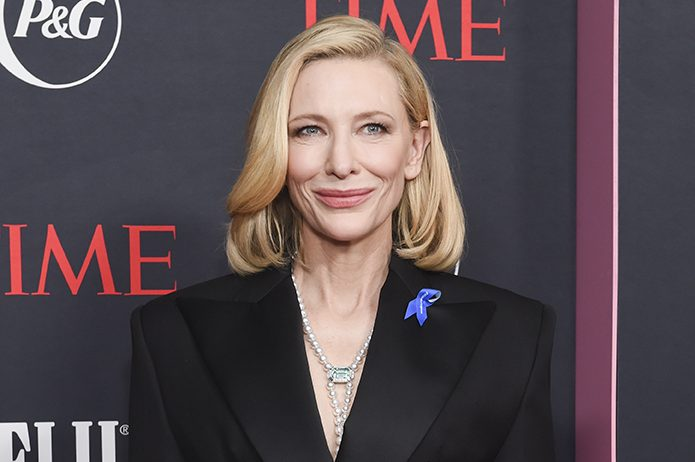
Cate Blanchett. The name itself conjures images of ethereal beauty, commanding stage presence, and a chameleon-like ability to inhabit characters across a breathtaking spectrum of genres. But beyond the accolades and the red carpets, Cate Blanchett is a deeply engaged and increasingly vocal advocate for environmental sustainability and the arts, solidifying her position as one of Australia’s most renowned and respected figures, both on and off the screen. Her biography is a testament to the power of talent, intellect, and a growing commitment to using her platform for meaningful change.
Born Catherine Élise Blanchett in Melbourne, Australia, in 1969, her early life offered little indication of the global stardom that awaited. Her American father, Robert, was an advertising executive, and her Australian mother, June, worked as a property developer and teacher. This blend of pragmatism and creativity likely contributed to Blanchett’s grounded approach to her craft and her willingness to explore diverse roles. After her father’s early death when she was ten, her mother raised Cate and her siblings, a period that instilled in her a strong sense of independence and resilience.
Blanchett’s initial foray into the arts was somewhat serendipitous. While traveling in Egypt after graduating high school, she was spontaneously asked to appear as an extra in an Egyptian boxing movie. This brief, unplanned experience sparked an interest in acting, leading her to abandon her initial plans to study economics and fine arts at the University of Melbourne and instead enroll in the National Institute of Dramatic Art (NIDA) in Sydney. NIDA, Australia’s prestigious drama school, honed her natural talent and provided her with a rigorous foundation in classical and contemporary theatre.
Her stage career blossomed quickly after graduating from NIDA in 1992. Acclaimed performances in Sydney Theatre Company productions, including “Top Girls” and “Hamlet,” established her as a formidable talent on the Australian stage. Her ability to embody complex characters with both vulnerability and strength drew critical praise and marked her as a rising star. This early grounding in theatre instilled in her a deep respect for the craft of acting and a commitment to nuanced character portrayal that would define her later film work.
Blanchett’s transition to the international film scene in the late 1990s was meteoric. Her breakthrough role came in the 1998 historical drama “Elizabeth,” where she delivered a captivating and Oscar-nominated performance as the young Queen Elizabeth I. This role not only showcased her regal presence and dramatic intensity but also announced her arrival as a major talent on the global stage.
The following years saw Blanchett navigate a diverse range of roles, demonstrating an extraordinary versatility that has become her hallmark. From the ethereal elf queen Galadriel in the “Lord of the Rings” trilogy to the fiercely independent Katharine Hepburn in Martin Scorsese’s “The Aviator” (for which she won her first Academy Award for Best Supporting Actress), she consistently delivered nuanced and compelling performances. Her ability to transform physically and emotionally into her characters, often disappearing completely into the role, has earned her widespread admiration and critical acclaim.
Her filmography is a testament to her adventurous spirit and her willingness to take on challenging and unconventional roles. She has portrayed iconic figures, complex villains, and ordinary individuals with equal depth and conviction. Her performances in films like “Blue Jasmine” (which earned her the Academy Award for Best Actress), “Carol,” “I’m Not There” (where she brilliantly embodied Bob Dylan), and “Tár” have solidified her reputation as one of the finest actors of her generation.
Beyond her illustrious acting career, Cate Blanchett has increasingly dedicated her platform to advocating for causes she deeply believes in, most notably environmental sustainability and the arts. In 2012, she became a patron of the Australian Conservation Foundation (ACF), one of Australia’s leading environmental organizations. Her involvement with the ACF has seen her actively campaign for climate action, renewable energy, and the protection of Australia’s unique natural heritage. She has used her public profile to raise awareness about the urgent need for environmental stewardship and has consistently called for stronger government policies to address the climate crisis.
Her commitment to environmental issues is not merely performative. She has actively participated in discussions and initiatives related to sustainable practices within the film industry and beyond. Her advocacy reflects a genuine concern for the future of the planet and a belief in the power of collective action.
Blanchett’s passion for the arts extends beyond her own acting career. She has served as co-Artistic Director of the Sydney Theatre Company (STC) with her husband, playwright and director Andrew Upton, from 2008 to 2013. During their tenure, they brought a diverse and innovative range of productions to the STC stage, fostering local talent and attracting international collaborations. Her commitment to supporting and nurturing the arts in Australia remains strong.
Throughout her remarkable career, Cate Blanchett has remained grounded and articulate, often speaking thoughtfully and intelligently on a range of social and political issues. Her influence extends beyond the entertainment industry, making her a respected voice in broader public discourse in Australia and internationally.
Cate Blanchett’s biography is a compelling narrative of talent, dedication, and a growing commitment to using her influence for positive change. From her early days on the Australian stage to her global cinematic triumphs and her passionate advocacy for the environment and the arts, she has consistently demonstrated a rare combination of artistic brilliance and intellectual engagement. Her enduring legacy will not only be defined by her iconic performances but also by her commitment to making a meaningful contribution to the world beyond the silver screen, solidifying her status as a truly renowned and respected figure in Australia and on the global stage.
External Reference: The Australian Conservation Foundation (ACF) website provides information about their work and Cate Blanchett’s role as a patron. (https://www.acf.org.au/)



